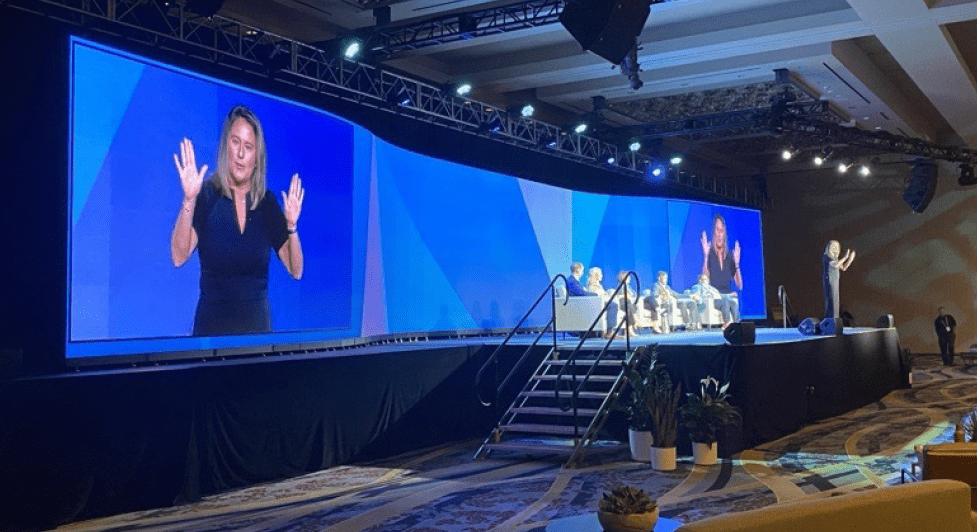As active adult communities continue to evolve as a solution for the new wave of seniors, efforts to scale the product are gaining steam as looming demand far outweighs supply. The active adult model is appealing to not only aging Boomers, but Generation X as well, creating multiple decades of positive demographics. The challenge is finding ways to implement the model on a national basis. Many operators have been successful on a regional level, developing clusters of three to six communities, but scaling the product has proved challenging.
During multiple NIC sessions at the 2024 Fall Conference, regional operators shared success stories, as well as challenges, from their efforts pioneering active adult over the past two decades. From possible potholes to avoid, to the need for multifamily developers to enter the space, the conversations focused on advancing the model to meet what is sure to be strong and steady demand for the foreseeable future.
Data Shows Demand
To demonstrate the success of existing active adult communities, NIC’s Caroline Clapp shared data on 800 active adult properties with 116,000 total units. The properties enjoy an average occupancy rate of 93%, compared to seniors housing which is typically in the high 80s. When looking only at communities that have been open five years or longer, eliminating those in lease-up, that number climbs to nearly 97%. “There is very strong demand for this product type,” Clapp put it plainly.
Digging further into the data, she pointed out the median number of units per property is almost 140, and the median age is less than 10 years old. Residents are typically in their late-60s to early-70s, on average. “This is also the fastest-growing demographic cohort,” Clapp said. “The renters are there. The demographics are lined up.”
In addition to demographics, increased longevity, a rise in solo aging , and a general rise of renters nationwide were also cited by Clapp as factors driving demand. Clearly, the active adult model is appealing and successful, so how does the industry take it from a regional product to a national one?
Spreading the Word
To advance the property type, it is important to not only educate industry participants, but local governments, municipalities, and towns as well. In many cases, when a developer is trying to build new product, local governments are unfamiliar with active adult, causing hesitation and delays. More educational efforts and resources are needed to move this property type forward.
Questions asked often include: why is active adult different than traditional seniors housing? Why should renters pay a premium on top of market-rate rents? The answers are well-known by now for those in the industry (i.e., the idea of having a community and a home, not simply a place to rent, but a place to thrive), but they need to be “shouted from the mountaintops,” as one panelist put it.
Residents of active adult communities are often the best promoters of the property type, as they share stories of living amongst friends and having a vibrant social life. Successful active adult communities have residents who are heavily invested in their community. By understanding and supporting such residents, savvy investors can expand their demographic reach with thoughtful strategies.
The Appeal to Investors
Demand is not the only factor driving interest for this property type amongst investors. The performance of active adult operations during the COVID years was described by one operator as “smooth sailing,” as occupancy sustained and rents were consistently paid, something that was noticed by the lending community. That strong performance should lead to better risk-adjusted returns and a smoother underwriting process on deals going forward. Recent performance, the strong credit profile of seniors, and the robust demand fueled by demographics combine to create vast appetite for active adult communities from a variety of investors, from large institutional investors to family offices.
Multifamily Crossover
During discussions, panelists kept coming back to the notion that multifamily developers need to get more involved in the active adult world. Panelists noted in some respects an active adult community is run more like a multifamily one—with a slimmer staff and a “jack of all trades” type manager who can do a little bit of everything. Of course, understanding the nuances of seniors housing and healthcare is critical as you travel up the acuity spectrum, but with a model catered to younger seniors that offers light care services, similarities to multifamily operations can be found.
In addition, multifamily developers may have an advantage in that they are typically the groups that own land and run construction companies, and thus control the ability to scale. If they can learn the operational distinctions and apply the big-scale strategies of multifamily, they could help transform regional success into national success. The developer groups who understand how to blend their success from multifamily into active adult communities have an opportunity to help define the space and set trends that will be followed for years.
Looking Forward
Panelists agree that the series of interest rate cuts enacted by the Federal Reserve should be among the tailwinds helping accelerate the development of this property type as the seniors housing and care industry continues to evolve. Construction costs have leveled off in recent months as well, which should also help fuel new builds.
Active adult transactions have picked up as of late, as one developer noted seeing “more equilibrium between buyers and sellers and more green shoots in the transaction market.” Acquisitions, refinances, new construction, and adaptive reuse opportunities should all be plentiful in the months and years ahead. Those with a firm understanding of the property type, its operational dynamics, and its potential for growth will be well-positioned to find success in the active adult market.
Stay informed on the latest industry news via Lument’s seniors housing and care insights.

